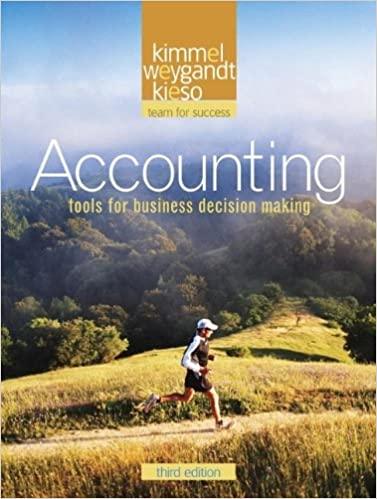



College Supply Company (CSC) makes three types of drinking glasses: short, medium, and tall. It presently applies overhead using a predetermined rate based on direct labor-hours. A group of company employees recommended that CSC switch to activity-based costing and identified the following activities, cost drivers, estimated costs, and estimated cost driver units for Year 5 for each activity center. Activity Setting up production Processing orders Handling materials Using machines Providing quality management Packing and shipping Recommended Cost Driver Number of production runs Number of orders Pounds of materials Machine-hours Number of inspections Units shipped Estimated Cost $ 32,000 48,000 14,000 63,000 56,000 44,000 $257,000 Estimated cost Driver Units 100 runs 200 orders 7,000 pounds 9,000 hours 40 inspections 22,000 units In addition, management estimated 2,000 direct labor-hours for year 5. Assume that the following cost driver volumes occurred in February, year 5. Number of units produced Direct materials costs Direct labor-hours Number of orders Number of production runs Pounds of material Machine-hours Number of inspections Units shipped Short 1,000 $4,000 80 9 3 400 600 3 1,000 Medium 500 $3,000 130 8 3 800 300 2 500 Tall 500 $2,000 120 5 8 300 300 2 400 Direct labor costs were $20 per hour. Required: a. Compute a predetermined overhead rate for year 5 for each cost driver recommended by the employees. Also compute a predetermined rate using direct labor-hours as the allocation base. b. Compute the production costs for each product for February using direct labor-hours as the allocation base and the predetermined rate computed in requirement a. c. Compute the production costs for each product for February using the cost drivers recommended by the employees and the predetermined rates computed in requirement a. (Note: Do not assume that total overhead applied to products in February will be the same for activity-based costing as it was for the labor-hour-based allocation.) Complete this question by entering your answers in the tabs below. Required A Required B Required C Compute a predetermined overhead rate for year 5 for each cost driver recommended by the employees. Also compute a predetermined rate using direct labor-hours as the allocation base. (Round your answers to 2 decimal places.) Allocation Rate per run per order per lb. Activity Setting up production Processing orders Handling materials Using machines Performir quality management Packing & shipping Direct labor hour rate per hour per insp. per unit per hour Required A Required B > Compute the production costs for each product for February using direct labor-hours as the allocation base and the predetermined rate computed in requirement a. (Do not round intermediate calculations.) Short Medium 4,000 $ 3,000 $ Tall 2,000 $ Direct materials Direct labor Overhead Total costs Compute the production costs for each product for February using the cost drivers recommended by the employees and the predetermined rates computed in requirement a. (Note: Do not assume that total overhead applied to products in February will be the same for activity-based costing as it was for the labor-hour-based allocation.) (Do not round intermediate calculations.) Show less Short Medium 4,000 $ 3,000 $ Tall 2,000 $ Direct materials Direct labor Setting up production Processing orders Handling materials Using machines Performing quality management Shipping Total costs










